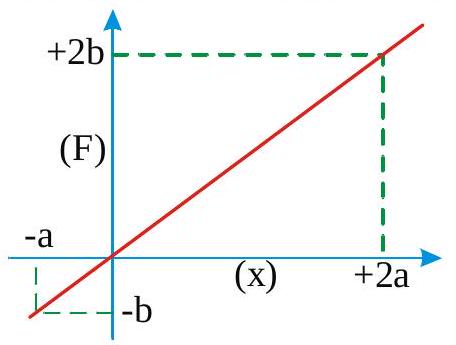268753 A block of mass\(5 \mathrm{~kg}\) initially at rest at the origin is acted upon by a force along the positive \(X\) - direction represented by \(F=(20+5 x) N\). Calculate the work done by the force during the displacement of the block from \(x=0\) to \(x=4 \mathrm{~m}\).
268756 Two forces each of magnitude\(10 \mathrm{~N}\) act simultaneously on a body with their directions inclined to each other at an angle of \(120^{\circ}\) and displaces the body over \(10 \mathrm{~m}\) along the bisector of the angle between the two forces. Then the work done by each force is
268753 A block of mass\(5 \mathrm{~kg}\) initially at rest at the origin is acted upon by a force along the positive \(X\) - direction represented by \(F=(20+5 x) N\). Calculate the work done by the force during the displacement of the block from \(x=0\) to \(x=4 \mathrm{~m}\).
268756 Two forces each of magnitude\(10 \mathrm{~N}\) act simultaneously on a body with their directions inclined to each other at an angle of \(120^{\circ}\) and displaces the body over \(10 \mathrm{~m}\) along the bisector of the angle between the two forces. Then the work done by each force is
268753 A block of mass\(5 \mathrm{~kg}\) initially at rest at the origin is acted upon by a force along the positive \(X\) - direction represented by \(F=(20+5 x) N\). Calculate the work done by the force during the displacement of the block from \(x=0\) to \(x=4 \mathrm{~m}\).
268756 Two forces each of magnitude\(10 \mathrm{~N}\) act simultaneously on a body with their directions inclined to each other at an angle of \(120^{\circ}\) and displaces the body over \(10 \mathrm{~m}\) along the bisector of the angle between the two forces. Then the work done by each force is
268753 A block of mass\(5 \mathrm{~kg}\) initially at rest at the origin is acted upon by a force along the positive \(X\) - direction represented by \(F=(20+5 x) N\). Calculate the work done by the force during the displacement of the block from \(x=0\) to \(x=4 \mathrm{~m}\).
268756 Two forces each of magnitude\(10 \mathrm{~N}\) act simultaneously on a body with their directions inclined to each other at an angle of \(120^{\circ}\) and displaces the body over \(10 \mathrm{~m}\) along the bisector of the angle between the two forces. Then the work done by each force is

